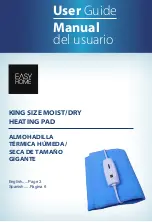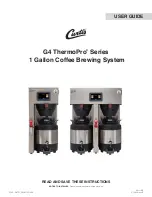
INSTALLATION STEPS
9
Step 4 — Install Indoor Air Handler and Expansion Device
For proper system operation, reliability, and performance the indoor air handler must be installed with a balance port, bi-directional
heat pump TXV specifically designed to operate with R-410A refrigerant at the given system capacity. Do not install an air handler
with evaporator coils having a capillary tube or an orifice type metering device.
INDOOR AIR HANDLER INSTALLATION
(NOTE)
In the event the indoor air handler is installed prior to the rest of the system, it is recommended that all air handler
settings and wiring be double checked at this point.
There is only one Hallowell Approved air handler. Any other air handler installed has no guarantee on the efficiency, life expectancy,
and/or performance. Indoor air handlers used with an Acadia outdoor unit must be capable of operating with a minimum of 2
blower speeds. On variable speed air handlers, ensure the jumpers are placed for recommended air flow requirements.
All indoor
air handling units must be installed as specified by the manufacturer’s installation instructions
.
However, the following
recommendations should be considered to minimize noise and service issues:
Take the proper precautions when mounting the indoor air handler for noise and vibration dampening. Use duct isolators on
both the supply and return ducts connecting to the indoor air handler.
DO NOT
run the system and/or the indoor air handler fan while construction is in progress.
All ductwork must be properly sized for proper airflow,
400 CFM per ton at a 0.10 to 0.15 static pressure
. Undersized ducts will
reduce the system performance, resulting in a reduced life, higher operational costs, and/or unit damage. Any questions with
the duct work, consult Hallowell International Technical Support.
Ensure that all air registers are in the fully open position.
Utilize flex connections at the main ductwork supply and return to isolate potential vibrations and noise. Ensure ductwork does
not come in contact with structural building members.
Be sure the filter cover is installed on the indoor air handler, ensuring easy access to the filter for routine maintenance and/or
filter changes. Any gaps, holes and joints should be properly sealed to prevent air leakage.
Seal all joints and insulate all ductwork.
Be sure the condensate drain and/or line set do not block access to the filter door or any other access panels of the indoor air
handler.
(CAUTION)
A Duct Bypass must NOT be used due to the high output capacity of the Acadia during certain outdoor ambient
conditions. Consult Hallowell International Technical Support for additional support.
IMPORTANT:
An air filter must be installed upstream of the return side of the indoor air handler coil, such that the filter is easy to
access for routine filter changes.
(NOTE)
Improper installation of equipment may result in undesirable noise levels in the living area.
The Hallowell matched air handler(s) come from the factory with bi-flow TXVs, not installed, specifically designed for R-410A.
Installation of a TXV is required.
IMPORTANT:
When installing the Acadia outdoor unit with the indoor air handler, an R-410A rated TXV must be installed.
NO
OTHER TYPE OF METERING DEVICE MAY BE USED!
Contact Hallowell International Technical Support
for any questions about
sizing or applications.
Содержание Acadia i Series
Страница 44: ...APPENDIX B WIRING DIAGRAMS 43 Figure 8 Line Voltage Wiring...
Страница 45: ...APPENDIX B WIRING DIAGRAMS 44 Figure 9 Hallowell Controller Wiring...
Страница 47: ...APPENDIX B WIRING DIAGRAMS 46 Figure 12 Entire Low Voltage Wiring with Electric Back Up...
Страница 48: ...APPENDIX B WIRING DIAGRAMS 47 Figure 13 Entire Low Voltage Wiring with Dual Fuel Back Up...
Страница 54: ...APPENDIX D ACADIA OUTDOOR UNIT MOUNTING 53 Figure 15 Typical Acadia Mounting...
Страница 56: ...APPENDIX E ACADIA COMPONENTS 55 Figure 17 Acadia Components...
Страница 57: ...APPENDIX F EWC ZONE CONTROL 56 Figure 18 Acadia with EWC Zone Control Wiring...











































